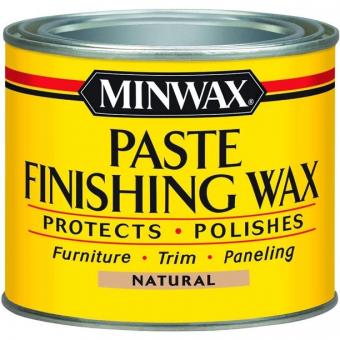
An important step to take when caring for your aged collectibles is to choose the best furniture polish for antiques. Unfortunately, not every furniture polish available is going to be safe to use on your antique furniture, and you can use these helpful tips to guide you the next time you visit the cleaning aisle of your local grocery store in search of some antique-safe furniture polish.
Best Furniture Polish Products for Antiques
Polishing antique furniture can be a lengthy process, especially if the furniture hasn't been polished in a while. Thus, you want to prepare yourself for a few hours of using elbow grease to work the polish into the wood, always following the grain. These are a few of the best furniture polish products that you can buy to help your antique furniture sparkle and shine.
Paste Wax

Paste wax is considered the best polish to use on antique furniture, as most paste waxes include beeswax and carnauba wax, which each enrich the depth of wooden materials and gives lasting protection against general wear and tear. These waxes can be applied by scooping out a small amount (a little truly goes a long way) onto a clean, soft cloth and working them into the wood using small circular motions. Here are some quality, reasonably priced, paste waxes you can buy.
- Minwax Paste Finishing - around $30
- Antiquax - about $15
- Gillboys Polishing Waxes - about $40
- Briwax Wax Polish - about $20
- BWC Clear Paste Wax - about $30
Liquid Wax

There is some debate over using liquid wax to polish antique furniture, but it is still considered an overall safe option to apply to aged wood. For example, the Howard Company is a well-respected industry leader who manufactures liquid polishes, and their Restor-A-Shine retails for about $10-$15 at most grocery and hardware stores.
Metal Polishes

Depending on your antique furniture's design, it may or may not include metal accessories like handles, knobs, embellishments, and so on. If yours includes these things, then you will want to be extra careful when cleaning and polishing them. Since metal polishes can cause damage to antique wood, you need to remove these pieces (if at all possible) and polish them separately from the wood furniture itself. Once your metal accoutrements have been cleaned and polished, you can reattach them. These are a couple of the most trusted metal polishes available.
- Goddard's Silver Polish - as little as $5
- Goddard's Brass & Copper Cleaner - as little as $5
- Never-Dull Brass Polish - about $10
- Maas Metal Polish - about $30
Caring for Antique Furniture
One mistake many people make when caring for their antique furniture is in confusing a worn-down varnish or finish for dirt and grime. No matter how much these historic finishes (oil, film, shellac, and varnish) have degraded over time, they add to the antique's appeal. Thus, you should be careful to properly clean any dust and dirt from your antique furniture before you break out any polishes or shines.
Why Polish Your Antique Furniture?
Antique wood furniture requires a wax polish every year or so, as it can help protect aged wood from being damaged by changes in humidity and particulate matter in the air. In addition, multiple coats of wax polish applied consistently over a few years can develop into a healthy barrier that enhances the wood grain's natural beauty.
Products to Avoid Using on Antique Furniture
Many of the most popular in-store furniture polishes aren't safe for use on antique furniture and can potentially cause lasting damage to your wooden pieces. These are a few of the furniture polishes you should never apply to your antique furniture.
- Aerosol polishes - These polishes can leave a film on the furniture that attracts dust and debris.
- Polishes with acidic juices or extracts - Lemon polishes are a favorite among the cleaning world, but the price of these high shines is an oil film that also attracts dust, debris, and fingerprints.
- Oil polishes - Regular oil polishes can ruin wood furniture as "it soaks into open grain and oxidizes, and can turn the wood black," as one expert explains to PBS.
If You're Unsure, Check With an Expert
While most antique furniture can handle a light dusting and a solid polish every six-months to a year, depending on how often the piece is actually used, some historic finishings require a bit more expertise. If you're unsure as to whether your antique furniture requires more specialized care, you should look for someone with experience in restoring antique furniture. If you can't find an expert in antique furniture, then you might make some headway using a carpenter's knowledge. When in doubt, wait to apply any polish until you've ensured that you won't cause any future damage to your beloved table or chair.
A Little TLC Goes a Long Way
While all of these polishes will help you spruce up your antique furniture, if you want to support a local hardware store or other business and buy their paste wax, be sure to check that their waxes do include beeswax and carnauba wax but don't contain essential oils. As they say, all good things come to those who wait, and in just a few years you'll have built up the perfect wax coating on your antique table, dresser, or curio cabinet.







